The burning of reeds destroys the floodplain forest of Talas.
Coordinates: 42.530910, 72.102726
Almost every year, fires break out in the floodplain zone of the Talas River. Under the pretext of "renewing" pastures or "clearing" thickets, reeds are burned. But along with them, the most valuable things are lost — rare floodplain forests, habitats for wild animals and birds, young seedlings, and an ecosystem that cannot be restored in just one season. "These fires are a slow suicide for our nature. They destroy not only plants but also the very foundation of life along the river," says the regional director of the EcoMir Foundation, Gamal Soronkulov. "We are losing forest plantings and tugai forests, which are home to red-listed birds, amphibians, and rare insects. Fires destroy both trees and people's attempts to restore nature. This is barbarism disguised as tradition." The floodplain forests of Talas are a green belt along the river, consisting of willows, jujubes, elm trees, and poplars. These forests protect the soil from erosion, purify the air, regulate groundwater levels, and ensure food and environmental security for local residents. However, after each fire, scorched areas remain, nests buried under ash, charred trees, and dead silence. In practice, arson is often committed intentionally, frequently without coordination with local authorities. Some arsonists are not even aware of the scale of the damage inflicted on the ecosystem. Sometimes, it is simply a way to free up land for grazing livestock. The flames easily get out of control, spreading to coastal trees and protected areas, and often there is no one to extinguish the fires in these places. The consequences are evident: loss of biodiversity, deterioration of air quality, decreasing water levels in the river, and land desertification. Meanwhile, control mechanisms are weak. Fines are rarely imposed, and only a few are held accountable for arson.
According to ecologists, the problem can only be solved with a comprehensive approach. A strict ban on fires in the floodplain zone is necessary, along with the expansion of protected areas, the introduction of patrolling and video surveillance, and ongoing work with the local population.
“We propose creating micro-reserves and green corridors along the river, involving young people in tree planting, and launching environmental education in villages,” adds Gamal Soronkulov. “The future depends on us. And if we do not stop this fire today, tomorrow there will be nothing left to save.” Nature does not have time to recover. It will burn and disappear. And along with the forest, birds, animals, water, and the health of future generations will vanish. Today we have a choice: either preserve the green floodplain of Talas or watch it turn to ash every year.
Almost every year, fires break out in the floodplain zone of the Talas River. Under the pretext of "renewing" pastures or "clearing" thickets, reeds are burned. But along with them, the most valuable things are lost — rare floodplain forests, habitats for wild animals and birds, young seedlings, and an ecosystem that cannot be restored in just one season. "These fires are a slow suicide for our nature. They destroy not only plants but also the very foundation of life along the river," says the regional director of the EcoMir Foundation, Gamal Soronkulov. "We are losing forest plantings and tugai forests, which are home to red-listed birds, amphibians, and rare insects. Fires destroy both trees and people's attempts to restore nature. This is barbarism disguised as tradition." The floodplain forests of Talas are a green belt along the river, consisting of willows, jujubes, elm trees, and poplars. These forests protect the soil from erosion, purify the air, regulate groundwater levels, and ensure food and environmental security for local residents. However, after each fire, scorched areas remain, nests buried under ash, charred trees, and dead silence. In practice, arson is often committed intentionally, frequently without coordination with local authorities. Some arsonists are not even aware of the scale of the damage inflicted on the ecosystem. Sometimes, it is simply a way to free up land for grazing livestock. The flames easily get out of control, spreading to coastal trees and protected areas, and often there is no one to extinguish the fires in these places. The consequences are evident: loss of biodiversity, deterioration of air quality, decreasing water levels in the river, and land desertification. Meanwhile, control mechanisms are weak. Fines are rarely imposed, and only a few are held accountable for arson.
According to ecologists, the problem can only be solved with a comprehensive approach. A strict ban on fires in the floodplain zone is necessary, along with the expansion of protected areas, the introduction of patrolling and video surveillance, and ongoing work with the local population.
“We propose creating micro-reserves and green corridors along the river, involving young people in tree planting, and launching environmental education in villages,” adds Gamal Soronkulov. “The future depends on us. And if we do not stop this fire today, tomorrow there will be nothing left to save.” Nature does not have time to recover. It will burn and disappear. And along with the forest, birds, animals, water, and the health of future generations will vanish. Today we have a choice: either preserve the green floodplain of Talas or watch it turn to ash every year.


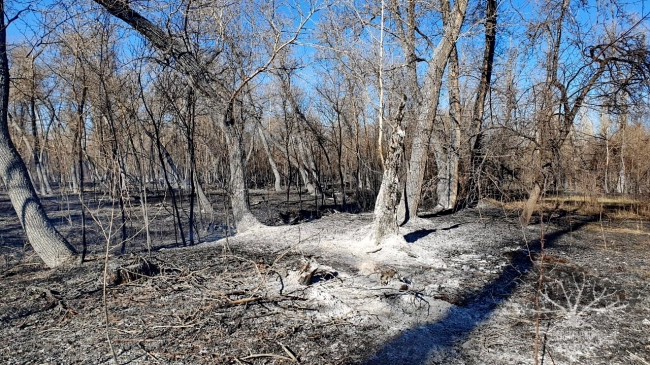

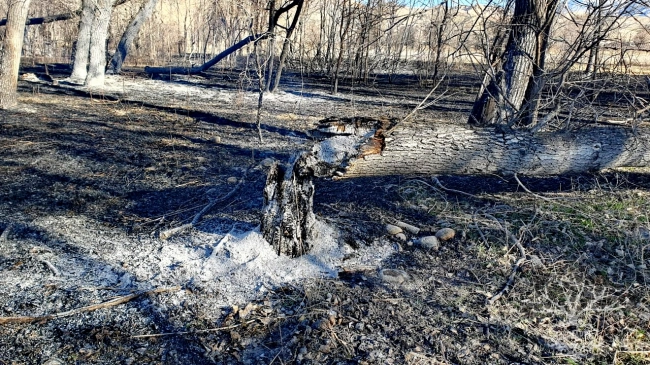
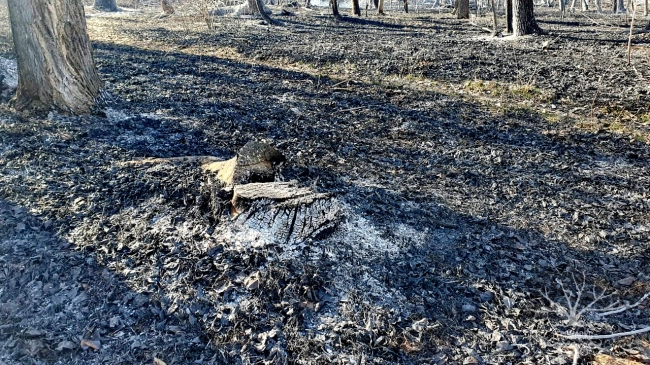

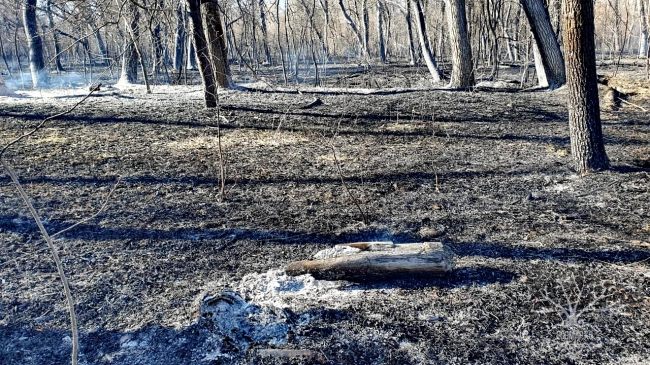
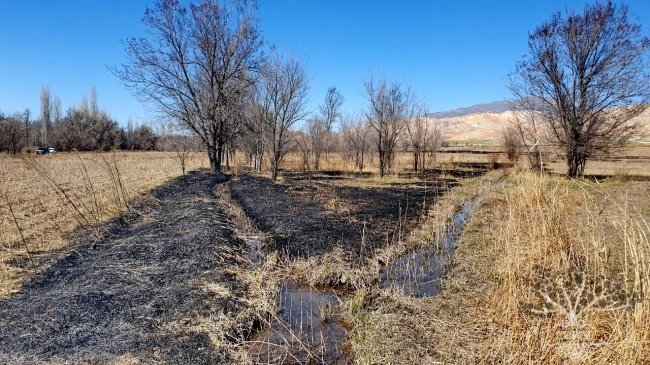
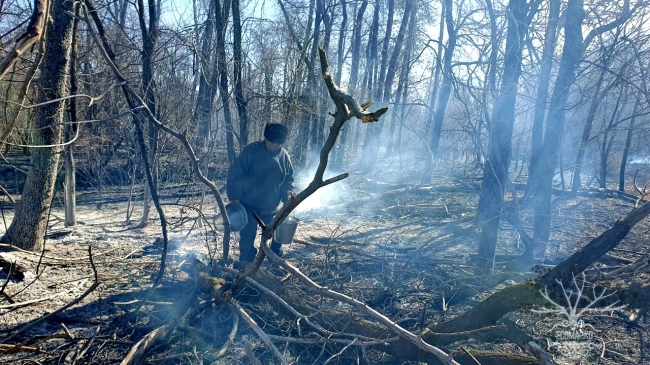
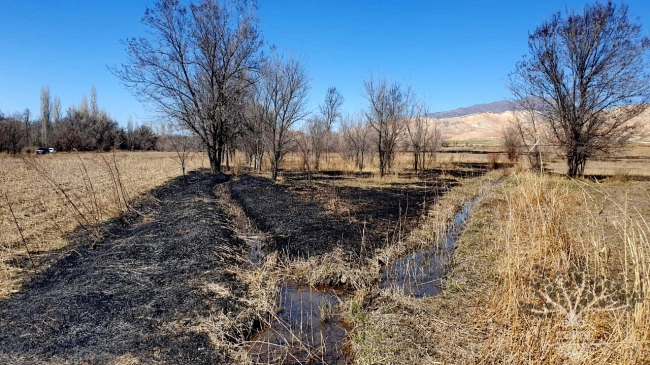


















Attention: Information based on submitted complaints